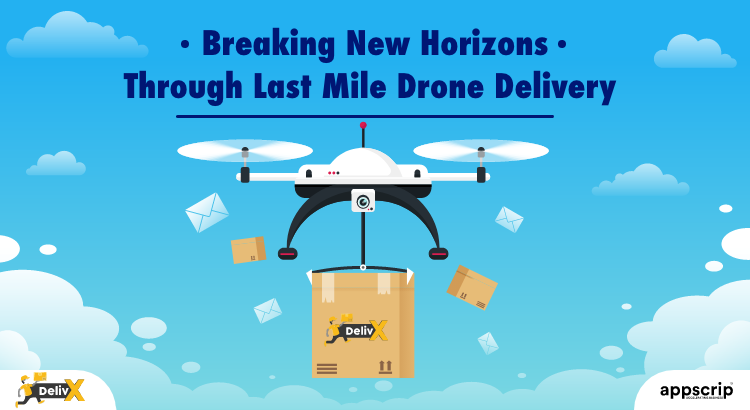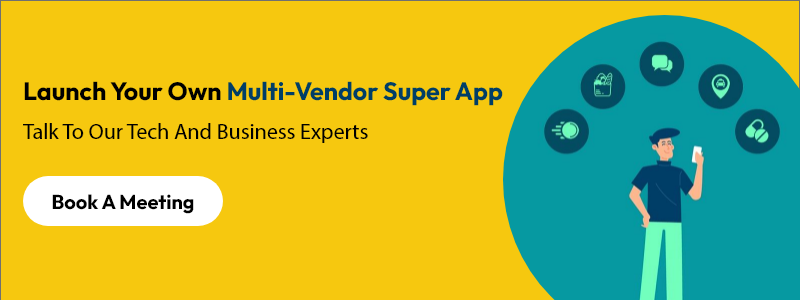A Drone belongs to the category of an ‘unmanned aircraft vehicle’ (UAV). These have been utilized by defence forces in various capacities such as remote-controlled aircraft or missiles for years. In the recent past, there has been an increase in the usage of drones for commercial purposes.
Such drones are designed to safely deliver goods to customers at the shortest possible time – and the service is referred to as last mile drone delivery.
The Federal Aviation Administration now allows firms with the know-how to operate Drones to apply for certificates that allow them to utilize (non-governmental) ‘civil’ drones for research, development, deliveries, photography, agricultural requirements and real estate purposes.
The global drone package delivery market is expected to grow at a CAGR of 44.7% for the forecast period (2019-2025). The development of drones that function in diverse regions and the incorporation of IoT in the ecosystem of drone deliveries are few major options for players in this domain.
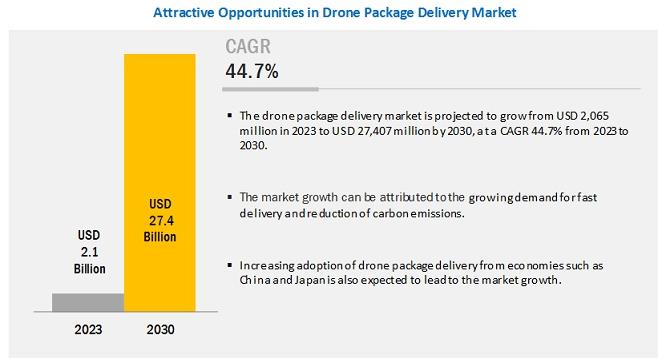
Benefits of Drone delivery
A delivery drone is an autonomous aerial vehicle, often unmanned that is utilized to transport packages, food or other items. Drones are particularly of use commercially to transport goods because it is safe, quick, not hampered by terrain and does not cause congestion.
E-commerce giant Amazon is working on Prime Air, a – futuristic delivery system that is designed to safely deliver packages via drones to customers in 30 minutes enhancing the last mile delivery domain.
Although Prime Air is in the pipeline and will see the light of day soon, drone delivery service will bring few significant changes in the E-commerce and retail segments.
Drones will take up the majority of deliveries
Drone technology for commercial use is still at a nascent stage and the finer points of Amazon’s plan for last-mile drone delivery has not yet been revealed. The ground-breaking, needful and innovative of all the potential impacts of drone delivery would be the majority of the deliveries would be taken over by drones.
Due to shortened delivery time schedules, firms would take up this aspect on priority to deliver goods within the vicinity as it would reduce infrastructure and enhance profitability.
Quick purchases made possible
Many retailers do already offer quick deliveries. Nowadays you could order anything and get it delivered to you on the same day. Prime Air’s promise of 30 minutes drone delivery will only encourage people to hit that ‘Buy’ button more frequently.
You could get anything you need to be delivered, like food during a last-minute decided party or apparel for a high profile meeting being held at a short notice.
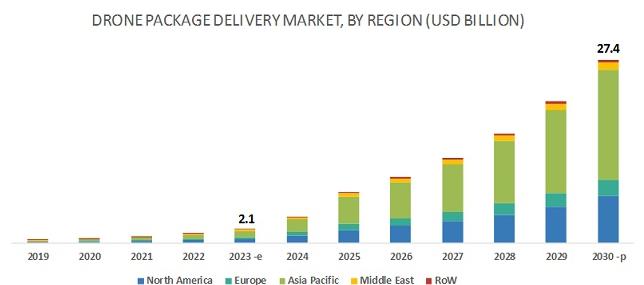
And to top it off, these purchases will not be limited to deliveries to your home. As in online delivery now, drones will be able to drop off goods/items that you need wherever you are – that is whether you are at home, in the office or travelling.
No Limitations To Reach Out For Products
There’s no coffee at home, your favourite brew? You need to purchase your kid’s camel-hair paintbrushes for the competition on the very next day. Your printer needs a colour ink cartridge to print a document urgently.
To solve all these pressing problems that most folks face at regular frequency takes time, money, patience and resources. But soon that would be a thing of the past after the introduction of last-mile drone delivery.
All you would have to do is log in to the apt website or get on to an App and with a few clicks, it’s done. Drones will bring your necessities to you wherever you are in the shortest possible time. This sort of convenience and haste could be an able competition for brick-and-mortar stores.

Drone delivery could be automated
The commercial application of drones is a subject that is not everyone’s cup of tea. Personnel who man these machines require hours of training on how to carry out a successful delivery or what needs to be done in case of an anomaly.
The pilots would be placed far away and would have to go through complex training to learn how to control the drone device. There should be systems/procedures in place on how to react during an emergency.
Indications are in place that Amazon drone delivery could be automated and without human intervention to overcome such situations.
Even though there is evidence that automation inculcates safer versions of machine activity and technology, not everyone is comfortable with systems and algorithms.
Future Prospects Of Last Mile Drone Delivery
The last mile drone delivery industry is growing rapidly and has the potential to revolutionise the way goods are delivered. The future prospects for last mile drone delivery are:
Increased Efficiency
Drone delivery can significantly reduce the time to delivery and cost associated with last mile delivery, which is usually the final leg of the delivery process. By bypassing road congestion and avoiding the need for delivery trucks, drones can deliver packages much faster and at a lower cost.
Enhanced Accessibility
Drones can reach areas that are difficult or impossible to access by road, such as remote rural communities or urban areas with heavy traffic. This means that people who live in such areas can receive deliveries that were previously unavailable or very expensive.
Improved Safety
With fewer delivery trucks on the road, there is a potential for reduced accidents and injuries. Drones can also be equipped with safety features such as obstacle avoidance systems, which can prevent collisions with buildings, trees, and other objects.
Environmental Benefits
Drones are electrically powered and emit zero emissions, which means they have a smaller carbon footprint compared to traditional delivery vehicles. This makes them an environmentally-friendly alternative for last mile delivery.
Increased Market Demand
As e-commerce continues to grow, the demand for faster and more efficient delivery options will increase. This presents a huge opportunity for last mile drone delivery companies to expand their operations and meet the needs of a growing market.
Regulatory Challenges
While the prospects for last mile drone delivery are promising, there are still regulatory challenges that need to be addressed. These include safety concerns, privacy issues, and airspace management.
UPS, FedEx and US Postal Service will take a beating
There are many agencies that handle shipments of Amazon and other retailers, hence when these firms turn to newer technology those firms could face a drastic drop in business. When you look at the $1 billion worth of business that Amazon offered to UPS in the year 2016, you can fathom what could be the situation as of now.
Experts estimate that USPS handles almost 41% of Amazon’s deliveries. Therefore it is fair to say that Amazon Prime-Air’s service is a Damocles sword that is hanging on the future of UPS, FedEx and the USPS.
Consumer rights protection
Grey regions in this kind of service exist, as they would reveal only when the service is taken up extensively. There are many topics that have not been broached, one certainly is the consumer protection laws.
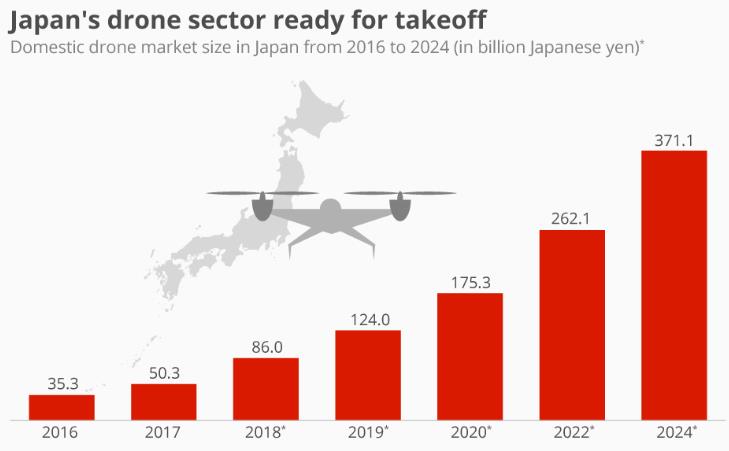
Consumer rights as how would authorities handle a situation when the merchandise is stolen along with the drone? What steps could be taken in the event the goods delivered to a client is damaged? How can these be returned after a drone delivery? Of course, these would be taken up, worked upon and solutions discovered before the services are pressed into action.
Conclusion Last Mile Drone Delivery
Even though there is a lot to be instilled in the various aspects of drone delivery, there is no doubt that this a part of the future. There have always been teething problems whenever newer technology is imbibed on a large scale.
Overall, the future prospects of last mile drone delivery are bright, with the potential to provide faster, more efficient, and more accessible delivery options for people and businesses around the world.
There could be other issues to consider with new technology, such as problems that have occurred with self-driving cars. There could be a failure in software that could cause collisions and damages.
Also drones could have restricted air space to complete the 30-minutes delivery promise schedules. Therefore online retailers such as Amazon or Walmart that deliver goods, will need more facilities and warehouses within reach in urban and suburban areas.
So there could be a consideration to collaborate with brick-and-mortar retailers as JioMart has resorted to that would, in turn, create a win-win situation for all entities.
After an Engineering degree and a Diploma in Management I devoted 16+ years working in the automotive industry. My innate skill and extreme passion in writing, encouraged me to adopt it up as a profession. I have been writing for more than 10+ years in the software industry. The 400+ blogs I published are informative, exhaustive and interesting to a professional and causal reader.
